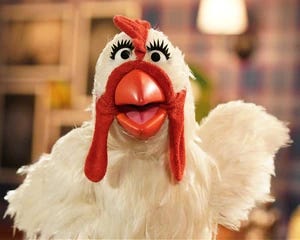Thank you very much for subscribing to this newsletter/thought space/whatever it will turn out to be. My intention is to write and share more about songs, songwriting, and my songwriting process. Some of that will involve looking at other people’s songs and examining what they did and how they might have done it. I thought, though, that I would start by focusing on one of my own songs.
The song that came to mind over the past few days, though I haven’t played or heard it in a long time now, is “Camille,” which ended up as the first song on my most recent album. Helpfully, for the purposes of writing about it, I can remember the exact starting point for this song. I was playing an afternoon mini-festival at the Sumner Knight Chapel in Keene, New Hampshire. I had been playing in Keene quite a bit over the three or four preceding years: at the Starving Artist, a venue run by an artist collective of the same name; at the Keene Music Festival, which happened (and still happens, as far as I know) at the end of each summer; and at a place called Fritz, a restaurant that specialized in, of all things, Belgian fries.
The Sumner Knight Chapel was a relatively new addition to this Keene circuit, though the building itself was by no means new. The chapel was constructed in Woodland Northeast Division Cemetery (a rather antiseptic name for a burial ground) in the 1930s. It’s a lovely stone structure in which shows began to be hosted, around 2013 or so, using only the acoustics of the room and no additional amplification. The combination of the setting and the completely unplugged approach made this a very unique venue that I became immediately fond of; I wish I’d had more opportunities to play it, but I’m glad for the two or three that I got.
As a result of playing in Keene as often as I did, I got to know a small but very friendly group of local musicians, writers, and artists. One of those writers was there that day, and we chatted for a bit in the afternoon sun outside the chapel. She always spoke warmly but playfully about my music, and her focus during that conversation, or at least the part that I remember, was on my use of proper names in my songs. She started imagining the most unlikely names I could incorporate into a song, and she became most satisfied with Camilla, specifically because it reminded her of the Muppet chicken.
Though she never framed it as a challenge or a dare, it started to feel like one. I had already become self-conscious about the frequency of proper names in my lyrics, primarily because that wasn’t the thing I wanted to be known for. I didn’t want to be known for any one thing, in fact, and there’s a thin line between idiosyncrasy and lazy habit. Less important to me, but still floating somewhere in my thoughts, was the idea that proper names limit a song’s relatability. I don’t remember where I came across this idea, though I think a source may have been one of the interviews in Paul Zollo’s Songwriters on Songwriting (I’d have to go back through to confirm). Regardless, I thought this sentiment underestimated listeners quite a bit, and I certainly wasn’t trying to write hit songs. And anyway, I’d heard enough about Eleanor Rigby, Suzanne, Carey, and countless others to be too concerned with that part of the equation. So, despite my hesitations, I decided to run once more toward this tic rather than away from it.
“Camille” was written around the same time as a couple of other songs that wound up on the same album, “Last To Know” and “The First Port.” I was consciously writing at the time with the intention of recording and playing songs with a full band, which I hadn’t done before. The learning curve was steeper than I’d expected: my mind doesn’t work in riffs, and I found myself trying to imbue the lyrics with an attitude that I hoped would eventually translate itself into the finished musical product. I was handwriting everything on yellow legal pad pages in those days (a practice I recommend but no longer follow myself) and writing several songs at once (a practice which I do not recommend). Juggling multiple songs was less daunting at that point, as the process was open-ended; things became more schizophrenic the following year when I set recording dates without having finished the songs I intended to record.
I don’t remember having it in mind while I was writing, but the opening lines of my song owe more than a little to the Rolling Stones’ “Mother’s Little Helper.” The ring in the third verse came from a real encounter I had with an older gentleman on a long bus ride. He started talking to me about his service in Vietnam; he showed me a silver ring he was wearing; and he spoke of soldiers returning home with treasures as if it were common practice. Maybe it was. Regardless, the coiled snake part was mine; the ring was his.
In the end, I guess I failed to meet the challenge I’d imagined for myself since Camilla became Camille. A few months later, I met a Camille who was pleasantly surprised to hear her name in a song. So, at least for one person, the proper name created an easier entry point. I don’t know if that meant she could relate.
If you’ve made it this far: thank you for reading. I hope to be in touch more throughout the coming weeks and months, and I hope you’ll follow along.



Love this song and everything Ian has done. Such a great songwriter who has songs where it takes many listens to fully interpret the depth and complexity of these words. An artist that allows you to think out loud as you listen.